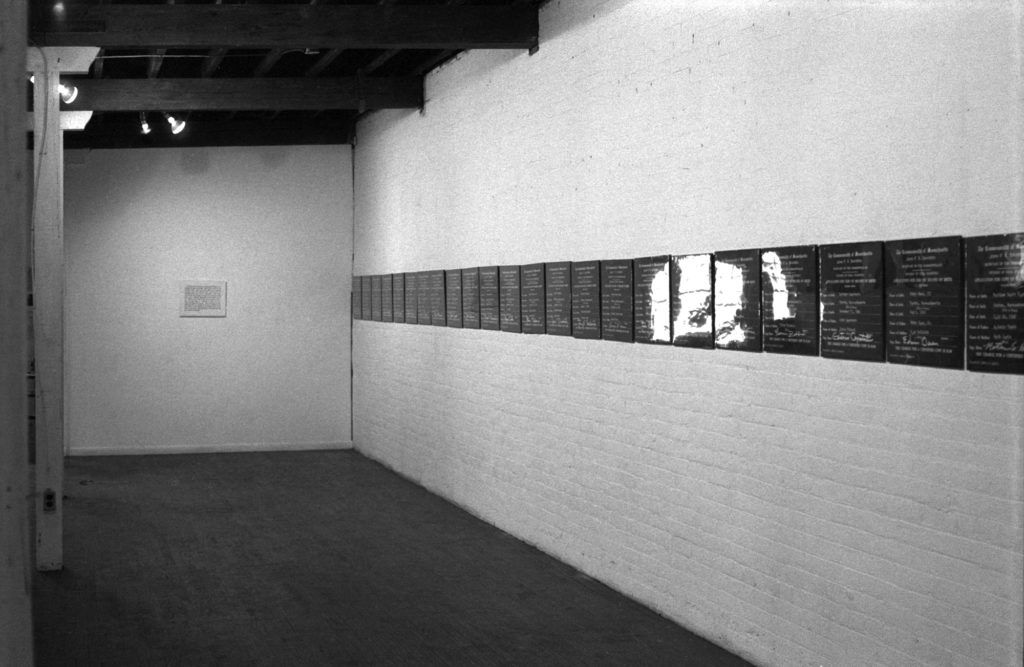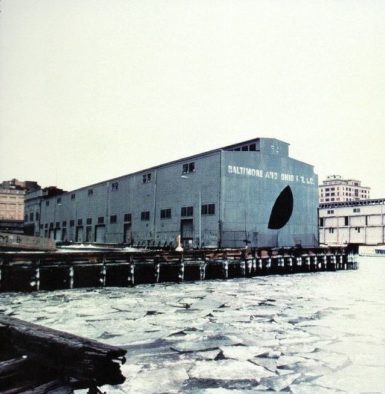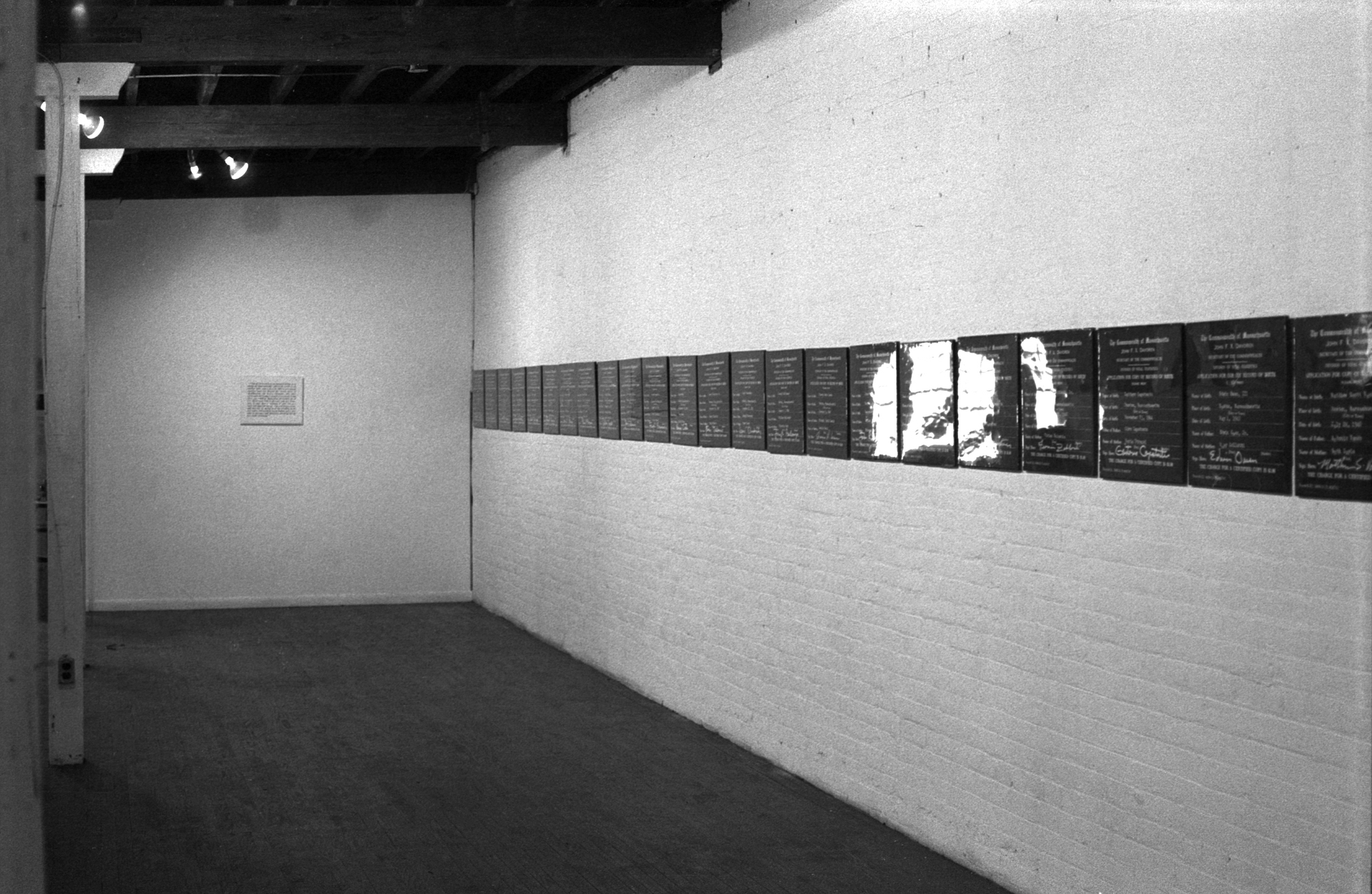[ad_1]

Installation detail of Jay Lee Jaroslav’s Extended Credentials (1967–72), for which the artist created fake identities using birth records pulled from City Hall in Boston. The installation was shot at A Space in Toronto in January of 1973.
© 1972 JAY LEE JAROSLAV / COURTESY TRIDENT GALLERY, GLOUCESTER, MASSACHUSETTS
Beginning in 1970, Edwin McGowin changed his name 12 times in court in Washington, D.C., as an artwork. Around the same time, Jay Jaroslav pulled birth records for deceased infants in Boston and fabricated fake identities—31 in all—to create a piece, Stephen Kaltenbach conceived of a conceptual work that could not be owned, and Christo and Jeanne-Claude labored to secure permission to construct their roughly 25-mile-long Running Fence (1972–76) in Northern California, the first work to require an Environmental Impact Statement. (The cost of that statement: $39,000.)
These are just a few of the remarkable stories that Joan Kee, a lawyer-turned-art historian who is now a professor at the University of Michigan, recounts in her absorbing and rigorously researched new book, Models of Integrity: Art and Law in Post-Sixties America (University of California Press). But Kee does more than provide a recent history of collisions between art and the law. She overlays developments in the two fields, and argues that each one can help us better understand the other. There is, in short, a lot to dig into, whether one is in the legal world or the art world.
In the 1960s and ’70s, as the Vietnam War and Watergate led the public’s trust in institutions to fall, many artists undertook “acts of transparency, reciprocation, trust, and conviction,” Kee writes, and “produced work that made calls for accountability part of their creative process.” Chris Burden detailed his finances in Full Financial Disclosure (1977), and Tehching Hsieh began his harrowing series of yearlong performances in New York, confining himself to a cage or living outdoors. As recounted by Kee, Hsieh “grafted personal integrity onto professional integrity in ways that made the force of actual statutory and judicial law seem pale by comparison.”
The United States was becoming an increasingly litigious society, and artists, curators, and the like were becoming more and more concerned about legal liability. Overseeing the storied enterprise Experiments in Art and Technology, electrical engineer Billy Klüver took precautions to minimize the chance of lawsuits, while dealers and artists began using certificates of authenticity. Even an artist as rule-flouting as Vito Acconci signed paperwork to take responsibility for “any damages to persons or property caused” by his 1971 performance Claim, which involved sitting in a SoHo basement with metal pipes and a crowbar and threatening to beat anyone who approached.
Artists were also thinking about how to use the law to improve their circumstances, aided by a coterie of sympathetic politicians, lawyers (the unsung, endlessly patient heroes behind many trailblazing artworks), and accountants like Rubin Gorewitz, who bemoaned that “such care is taken with the inanimate art object—while the human artist is treated as disposable.” Seth Siegelaub and lawyer Robert Projansky crafted an Artist’s Reserved Rights Transfer and Resale Agreement to provide artists a cut of profits when their work was resold, and Robert Rauschenberg lobbied for a resale royalty law.
Such projects had, at best, uneven results. Collectors balked at using the contract created by Siegelaub and Projansky, attempts to reform the tax code to help artists largely faltered, and while California adopted a resale royalty act, other states did not. (Last year, a federal judge ruled that California’s law was unconstitutional.) A federal royalty bill has gone nowhere. On a more positive note, the passage of the Visual Artists Rights Act in 1990 afforded artists the ability to prevent the alteration or destruction of their work in some instances.
Regardless of their outcomes, such activist efforts can be seen as essential inspirations for contemporary groups like W.A.G.E., which has pushed arts institutions to commit to paying artists certain baseline fees, and artists like Cameron Rowland, who offers some of his sculptures only as rentals so that they cannot be owned or traded for profit.

On Pier 52 in New York: Gordon Matta Clark, Day’s End, 1975, which David Hammons will pay tribute to in a new work on the site opening in 2020, a project with the Whitney Museum.
COURTESY WHITNEY MUSEUM
Kee shows artists gamely negotiating the law in intriguing and even risky ways. When the police investigated Gordon Matta-Clark for breaking into an abandoned pier on Manhattan’s West Side and cutting holes in the structure for his piece Day’s End (1975), the artist’s lawyer suggested providing “a sincere statement which will reek with cooperation.” Instead, Matta-Clark provided a provocation-filled response, almost daring the city to pursue a trial, which he told his lawyer would be “the best relevant pop-theater.” (Acting in the name of public safety, authorities ended up blocking off entrances to the building, effectively removing the piece from view.)
In what could be understood as a similar strategy of refusal, the photographer Sally Mann pointedly declined to pursue legal action, even as some politicians, pundits, and journalists accused her of creating child pornography or harming her children by photographing them nude. Mann was “uninterested in becoming yet another combatant” in court, Kee writes. Instead, she let her photographs speak for themselves, so that they could “generate questions rather than declarative statements.” Her behavior, like her art, asks viewers to consider who has the right to look at images, and by what standards they should be judged.
Negotiating for years with ranchers and government representatives about where to place their miles-long fabric Running Fence, Christo and Jeanne-Claude were exemplars of abiding by the law—until they weren’t. Mindful of the tight timetable for the project, they decided to plow the fence into the Pacific Ocean, despite telling a commission that had not yet ruled on that aspect of the work that they would not do so. “If there is no illegal part, the project is less reflective of the system,” Christo later mused. One of their lawyers, made irate by their actions, nonetheless admitted, “I’d of done the same thing.” (The footnotes in Models of Integrity are delicious, filled with many such compelling quips and backstories.)
Felix Gonzalez-Torres also made negotiation central to some of his work, writing certificates that allow, say, his piles of candy to be installed in different ways and with different brands, so long as certain parameters are met. He “transformed compliance into an ongoing conversation about possibilities rather than prohibitions,” Kee writes. The example of Gonzalez-Torres could be seen as an allegory for the potential the author sees in art itself. “Unlike law, where there is pressure to conform judgment to preexisting legal structures, artworks invite hypothetical thinking,” she writes.
Models of Integrity reads as a compelling call for artists, arts professionals, and viewers to work more ambitiously, and to think with more nuance. “Artworks help create necessary psychological space within which to do the political and affective labor needed to bridge the sometimes gaping chasms between law and justice,” Kee argues. As traditional institutions are again under intense stress and as polarization grows more pronounced, we could certainly use more of that kind of psychological space right now.
Achieving that is, of course, no simple business. It can require sustained levels of commitment from both artists and viewers—a willingness to act in good faith and attempt to find common ground. When it comes to such undertakings, a comment from a rancher about being involved in the debate around Running Fence can be read as the highest form of praise: “There’s a vertigo thing that in order to be a citizen you’ve got to be a part of that art.”
[ad_2]
Source link


